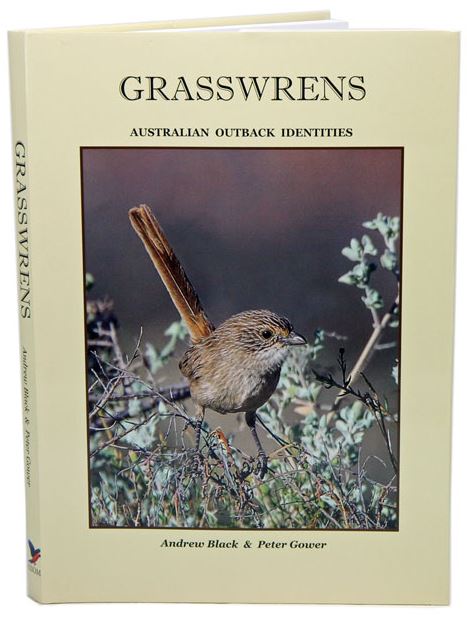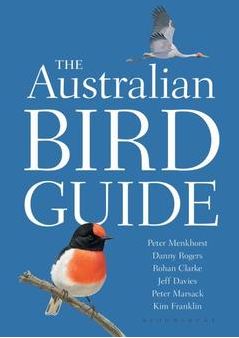|
|
Book Reviews |
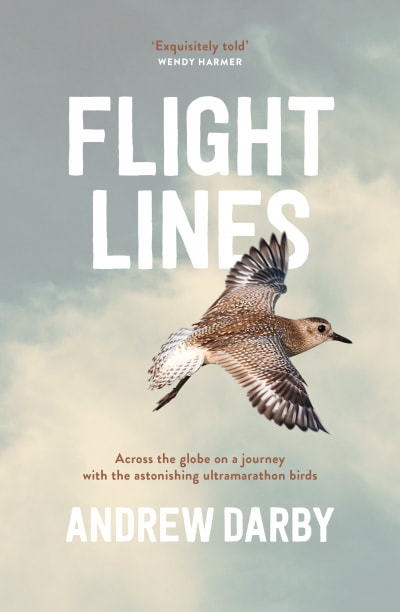
Andrew Darby Flight Lines, Allen & Unwin, 2020, ISBN 978 1 76029 655 1
Thought shorebirds were grey and boring? Think again. How do they navigate and what happens when they meet a major storm cell? Discover pre-historic flyways that still influence current flyways, such as the present-day East Asian-Australasian Flyway our waders follow. Andrew Darby, a journalist, follows the journey of waders in their astonishing ultramarathon flights from the Southern Hemisphere to their breeding grounds in the Arctic. A key bird he follows is the unassuming Grey Plover, notably two that were radio tracked from here in South Australia. He looks at the history behind our current knowledge of wader migration, who some major players have been and the challenges they faced in their research. AOC members will recognise people mentioned in this book, such as Maureen Christie who met us on the beaches near Carpenter Rocks on the 2018 Nelson Spring Outing. For other AOC members who have been to a Farewell to the Waders course in Roebuck Bay, Broome, some of the photos show familiar scenes. Sadly, many migratory wader populations are diminishing. Andrew looks at the political, climatic, predatory and commercial threats that may result in the extinction of many shorebird species.
Marianne Wakelin
Thought shorebirds were grey and boring? Think again. How do they navigate and what happens when they meet a major storm cell? Discover pre-historic flyways that still influence current flyways, such as the present-day East Asian-Australasian Flyway our waders follow. Andrew Darby, a journalist, follows the journey of waders in their astonishing ultramarathon flights from the Southern Hemisphere to their breeding grounds in the Arctic. A key bird he follows is the unassuming Grey Plover, notably two that were radio tracked from here in South Australia. He looks at the history behind our current knowledge of wader migration, who some major players have been and the challenges they faced in their research. AOC members will recognise people mentioned in this book, such as Maureen Christie who met us on the beaches near Carpenter Rocks on the 2018 Nelson Spring Outing. For other AOC members who have been to a Farewell to the Waders course in Roebuck Bay, Broome, some of the photos show familiar scenes. Sadly, many migratory wader populations are diminishing. Andrew looks at the political, climatic, predatory and commercial threats that may result in the extinction of many shorebird species.
Marianne Wakelin
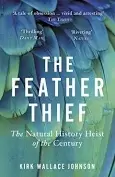
An easy read for troubling times is a book I was given for Christmas (or perhaps birthday) 2018. The Feather Thief by Kirk Wallace Johnson tells the story of the largest natural history heist of the 20th Century. It's not so much a who-dunnit as an investigation into into why “one summer evening in 2009, twenty year- old - musical prodigy Edwin Rist broke into the Natural History Museum at Tring…..and made off with….. a suitcase full of rare bird specimens." (Taken from the blurb.) It’s a true story and quite an eye-opener. Since we can’t go shopping, its available from Booktopia…..delivered to your door. As well as an absorbing tale to fill some enjoyable moments, it makes an excellent gift for bird-loving friends.
Gill Simons
Gill Simons
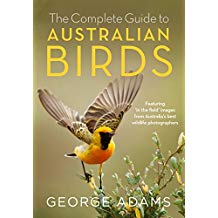
George Adams The Complete Guide to Australian Birds Viking, 2018
The architect and bird-lover George Adams, who has earned a reputation for his books on gardening to attract native birds, has combined with a large group of photographers to produce a beautiful guide to Australian birds. Like several of its immediate predecessors, this is probably too bulky to be used in the field, but with the rise of e-guides that can be installed on mobile phones and tablets, that is certainly not a drawback. Where it differs from the 2017 Australian Bird Guide by Peter Menkhorst, Danny Rogers, Rohan Clarke and Jeff Davies, is that the illustrations are all photographs, some of them quite astounding. Following modern trends, the maps, information and illustrations for each bird are all together, making it extremely easy to consult. A lovely touch is that the fore-edges of the pages are colour-coded, with yellow, for example, indicating the honeyeaters, while sea green is devoted to skuas, jaegers, noddies, terns, and gulls. A guide at the front of the book makes using these colours an easy way to turn quickly to particular groups or families. The initial information, on parts of a bird, bill-adaptations, typical nest-types, and the principal vegetation habitats, is concise but useful, and the descriptions of the bird families informative for both beginners and more seasoned birders. For more localised birds such as Gang Gangs or Short-tailed Grasswrens, a binocular symbol leads to localities where they can (with luck) be seen. I confess to a prejudice against photographic guides, because lighting can often be misleading, but this book has won me over. Particularly impressive are the photographs of swifts, for whereas anyone can take a half-decent shot of a kookaburra, to get a swiftlet perfectly focused on the wing is admirable. There are three indices: an index of common names, one of scientific names and a quick index with terms such as “ducks” “eagles” and “robins”. The last page is devoted to Australian birding hotspots, with a list too concise to be of much use to locals, but no doubt helpful for overseas birders visiting Australia. And just before that, as a symbol of the book’s generous use of illustrations, is a group of very beautiful full-page photos. Other full-page photos are scattered through the text, mainly to introduce each family. The guide covers “all wild birds regularly seen on the mainland, Tasmania and off-shore islands and oceans”. Christmas and Cocos Islands are not covered, nor are Norfolk or Lord Howe, but what Adams has provided is an attractive, useful and highly readable guide that is a pleasure to own.
RL
This handsome new addition to Australian bird guides is a collaborative effort by seven experienced birders, three of whom, Rohan Clarke, Peter Menkhorst and Danny Rogers, wrote the text, three more--Jeff Davies, Peter Marsack and Kim Franklin--produced the beautiful art work, while Glenn Ehmke, drawing on a large database, provided the distribution maps. To an experienced birder dipping into it for the first time, it comes as a considerable surprise to find that it opens, not with emus and cassowaries, but with penguins. The team has taken the innovative step, already pioneered by bird guides from other countries, of replacing taxonomic order with a more pragmatic sequence, presenting birds according to the broad habitats in which we might encounter them--marine, freshwater and terrestrial. Within that broad set of categories, there is a taxonomic order, keeping families and genera together. The two reasons given for this change are that understanding of bird systematics is changing rapidly as new molecular genetic techniques are applied, leading to considerable changes in the family tree, and that those not familiar with taxonomic sequence will find it easier to locate the bird group they are looking for. Both reasons have merit, although a good index and the visual quick reference guide provided by many guide books, including this one, are usually enough to allow any reader to locate bird groups and particular species.
The 30 page introduction has much useful information about such varied matters as moult, migration, terminology, binoculars, cameras, sound recording and birding ethics. The information in the introduction is considerably expanded by panels within the body of the guide, focusing on individual families or groups, allowing the reader a useful overview before homing in on individual species. They also provide additional information: the section on swiftlets, for example, includes a panel on other swiftlets sighted in Australian territories, while the passerines are introduced with a panel providing information on characteristics of passerines. Other panels are devoted such topics as Ageing Passerines. The descriptive text for each species is copious, including the usual information on distribution, size, behaviour, voice and so forth as well as notes on aspects such as migration, foraging behaviour, and predation. Each entry is accompanied by a small circle, in which the amount of colour indicates how easy the bird is to find.The illustrations are similarly generous, with the bird depicted in flight, sometimes in its habitat, and at various stages of its development. The distribution maps, though small, are clear.
This is not really a field guide, being too handsome and too heavy for most birders to want to carry with them. I suspect most of us will want to have either a more compact guide, such as Morcombe's, or a digital guide to carry in the field. Nevertheless, the ABG it is a very useful work of reference, and is a clear improvement on the various guides that have been available until now.
RL
The 30 page introduction has much useful information about such varied matters as moult, migration, terminology, binoculars, cameras, sound recording and birding ethics. The information in the introduction is considerably expanded by panels within the body of the guide, focusing on individual families or groups, allowing the reader a useful overview before homing in on individual species. They also provide additional information: the section on swiftlets, for example, includes a panel on other swiftlets sighted in Australian territories, while the passerines are introduced with a panel providing information on characteristics of passerines. Other panels are devoted such topics as Ageing Passerines. The descriptive text for each species is copious, including the usual information on distribution, size, behaviour, voice and so forth as well as notes on aspects such as migration, foraging behaviour, and predation. Each entry is accompanied by a small circle, in which the amount of colour indicates how easy the bird is to find.The illustrations are similarly generous, with the bird depicted in flight, sometimes in its habitat, and at various stages of its development. The distribution maps, though small, are clear.
This is not really a field guide, being too handsome and too heavy for most birders to want to carry with them. I suspect most of us will want to have either a more compact guide, such as Morcombe's, or a digital guide to carry in the field. Nevertheless, the ABG it is a very useful work of reference, and is a clear improvement on the various guides that have been available until now.
RL
